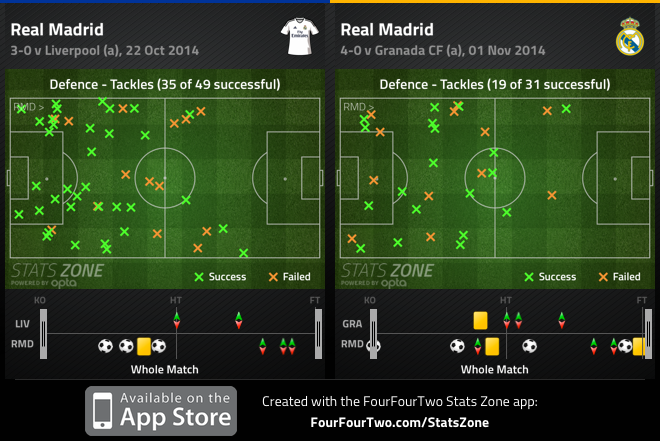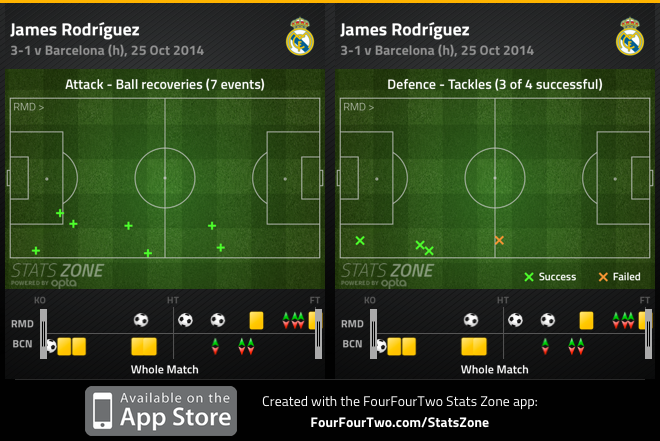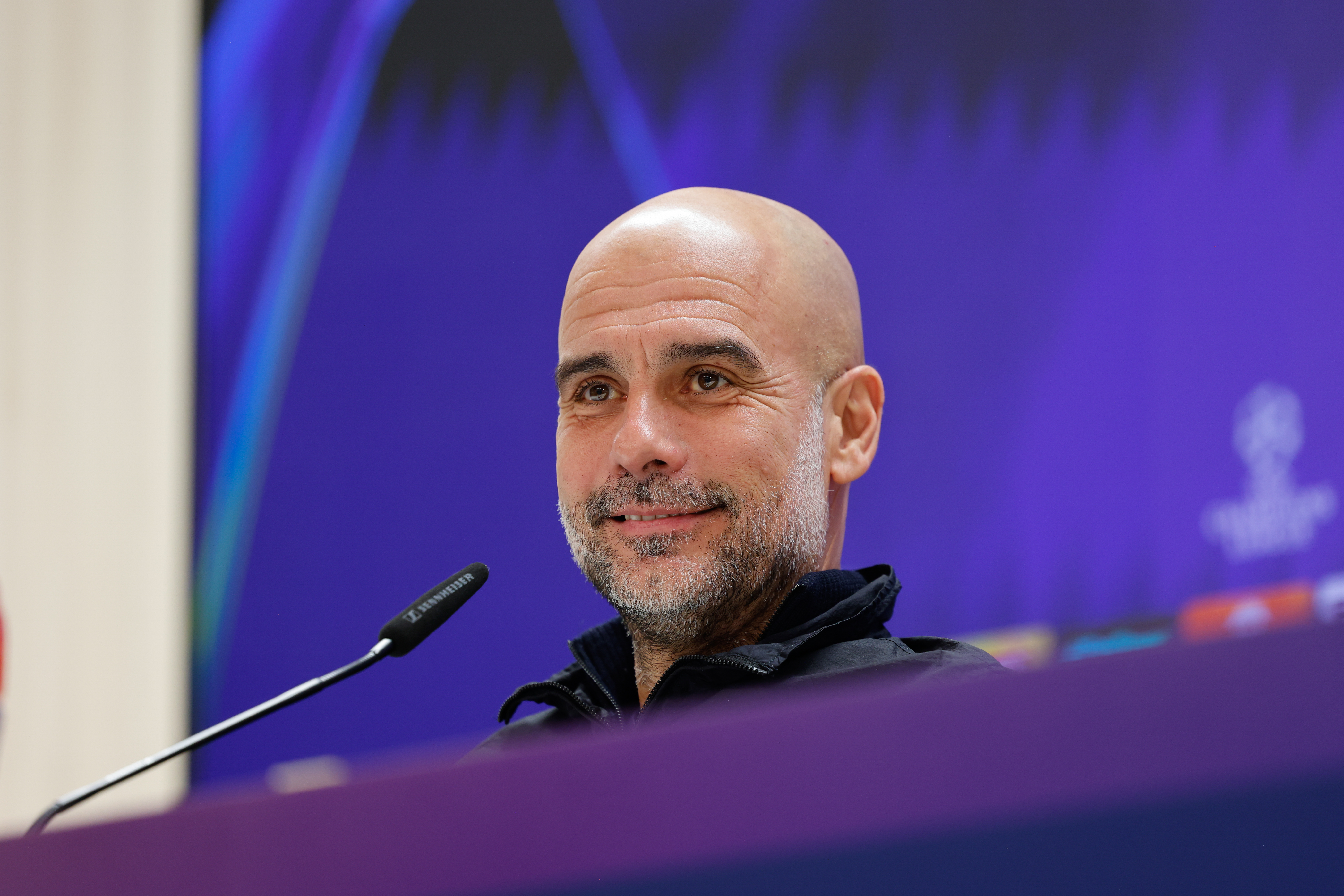Bale's back to oust Isco against Liverpool – but is it really for the best?
The Welshman is back fit after injury, but Thore Haugstad warns that an immediate return may not be ideal just yet...

Real Madrid’s season so far has carried a sense of déjà vu: after a tempestuous start littered with below-par performances, unsettled galácticos and the tactical riddle of how to fit them all together, Carlo Ancelotti has calmed the storm by working out an ideal system.
Full name: Francisco Roman Alarcon Suarez
Date of birth: April 21, 1992 (22)
Position: Attacking midfielder
Clubs: Valencia (6 games, 0 goals), Malaga (77 games, 17 goals, 8 assists) Real Madrid (56 games, 12 goals, 11 assists)
Country: Spain (4 caps)
Honours: Copa del Rey, UEFA Champions League, UEFA Super Cup (2014)
Last season the solution was 4-3-3; this time it is 4-4-2. Since its introduction, Los Blancos have practically been unplayable, the system bringing cohesiveness and accentuating their abundant individual ability. Once more, the affable Italian has managed to cram all his stars into one line-up. Except one.
The situation is harsh on Isco. After joining the club from Málaga for £23 million last year, the Spanish playmaker was edged out from central midfield by Ángel Di María, while Cristiano Ronaldo occupied the left wing. An experimental false nine role never worked out and he remained a peripheral figure in 2013/14.
This time the conditions are similar. Ancelotti’s 4-4-2 accommodates two attacking midfielders in the wide positions, and the expensive duo of James Rodríguez and Gareth Bale seem undroppable.
Yet since Bale’s injury last month, Isco has stepped in and shone. After his display in the Clásico, an online poll of 30,000 readers by Spanish newspaper AS saw 56.35% exclude Bale from the strongest XI.
The explosive Welshman is likely to return tonight against Liverpool, and may even start. The question for Real Madrid is whether that is a good thing.
Workhorse
The best features, fun and footballing quizzes, straight to your inbox every week.
The mere existence of that debate underlines the talent of Isco, who has represented so many of the qualities that have made Real Madrid so formidable recently. From an individual perspective Bale may win, but the nature of Isco’s influence on the collective is special.
There are several points to consider. Defensively, the work-rate of the wide players is fundamental for Ancelotti’s 4-4-2 to retain solidity. The coach organises his side in the classic two banks of four, which limit space between the lines. This is helped by the positional intelligence of central midfielders Toni Kroos and Luka Modrić. Generally, Real have a tendency to stick tight and commit challenges inside their own half.

The gameplan resembles some of what Diego Simeone has created at Atlético Madrid, where hard-working central midfielders fill the wide positions. From a defensive point of view this suits Isco better than Bale and, in the recent games featuring him and Rodríguez, their industry has been notable.


The vital variable
Then comes the matter of Isco’s technical ability. Suitably, the left-sided midfielder in Real Madrid’s system is often the busiest. The collective passing game is inclined to lean towards the left, since Marcelo is the most gifted full-back and Ronaldo plays on that side. (The same happened under José Mourinho, with Xabi Alonso positioned towards the left.) And so Isco is often more influential than Rodríguez.

The same is true when Rodríguez plays on the left and Bale on the right, but Isco’s presence provides Real Madrid with greater variety and flexibility. Being right footed, he can either drift wide or cut inside to dribble and deliver incisive passes. His movement is often synchronised with Ronaldo’s, so when one goes inside, the other stays wide and stretches play. Ronaldo’s tendency to alternate between being a left winger and a classic forward – unlike Karim Benzema, whose movement is more balanced – helps the cause.

As such, Isco’s movement essentially decides Real Madrid’s formation. When he goes wide, the shape is a classic 4-4-2. When he moves inside and Ronaldo goes wide, the team morphs into a 4-3-3. In a system with several fixed positions, he is the variable. His presence completes a formidable left-sided trio.
Marcelo can burst down the flank and cross or even shoot; Ronaldo can cut inside from wide to fire off rockets; Isco can advance down the line or drift inside to exploit space between the lines. No wonder Glen Johnson was the busiest full-back in Liverpool's 3-0 defeat to Madrid at Anfield.

This sense of unpredictability would make it understandable if whoever plays right-back for Liverpool tonight might prefer to see Isco benched. Two weeks ago the 22-year-old completed more dribbles than anyone on the pitch and strung a series of passes in the final third.

Carlo’s choice
Should Isco be sacrificed, the role is likely to be taken by Rodríguez. They interpret it differently. The Colombian is left-footed and seems more at home centrally or on the right, where he can cut inside to shoot. (Only this weekend he hit an angled looped volley from that side, away to Granada.) On the left Rodríguez is limited to crosses, and passes for which the angles are tricky. In his most recent league game in that position, against Athletic Club, his influence was less obvious than that of Isco.

Despite these factors, Bale seems destined to regain his place, if not tonight then next time. The issue is very much of the luxurious kind for Ancelotti, and it demonstrates the abundance of talent residing at the Santiago Bernabéu when a player of Isco’s quality fails to make the line-up.
To measure exactly whether Real Madrid are better with Isco or Bale – or indeed with both, and Rodríguez benched – is challenging. The fluency and functionality of the side seems ideal when Isco plays, yet the sheer power and individual quality of Bale is probably greater. Perhaps tonight’s match will yield some answers.
Real Madrid vs Liverpool LIVE ANALYSIS with Stats Zone
